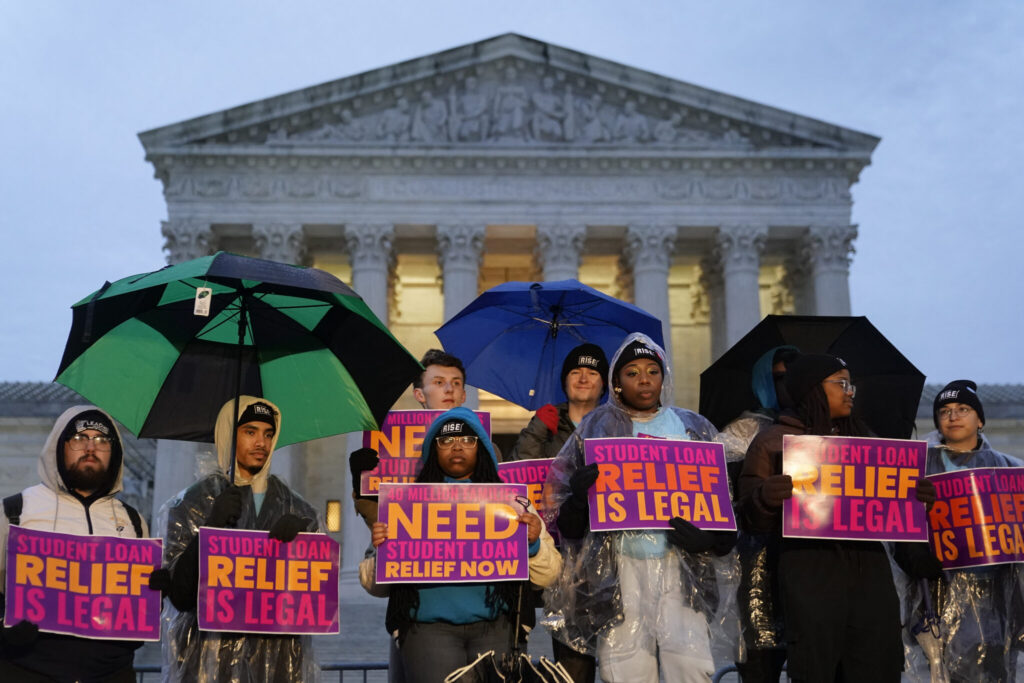The Biden administration’s ambitious program to forgive billions of dollars in federally supported student loan debt is set to face multiple challengers before the U.S. Supreme Court on Tuesday, when the court is scheduled to hear arguments in two cases that dispute the plan’s legality. The plan is expected to impact at least 26 million student loan borrowers who either applied for, or qualified for relief before legal challenges put its roll out on hold. The Associated Press has the story:
SCOUT weighs Biden’s student loan debt relief
Newslooks- WASHINGTON (AP)
The Supreme Court is about to hear arguments over President Joe Biden’s student debt relief plan, which impacts millions of borrowers who could see their loans wiped away or reduced.
So far, Republican-appointed judges have kept the Democratic president’s plan from going into effect, and it remains to be seen how the court, dominated 6-3 by conservatives, will respond. The justices have scheduled two hours of arguments in the case Tuesday, though it will probably go longer. The public can listen in on the court’s website beginning at 10 a.m. EST.
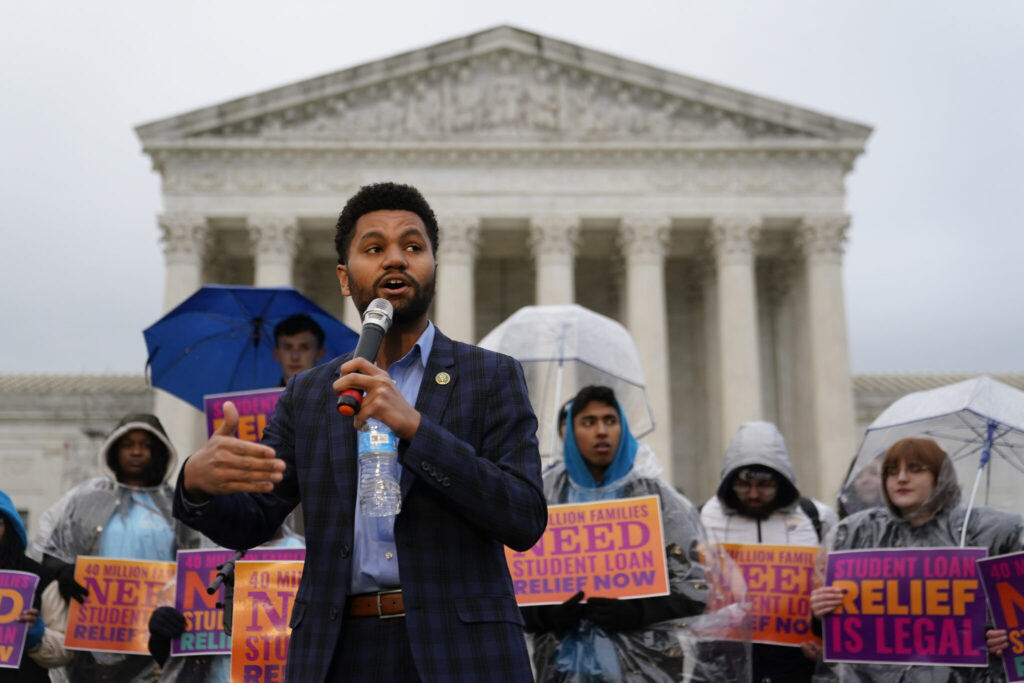
The Supreme Court is taking up a partisan legal fight over President Joe Biden’s plan to wipe away or reduce student loans held by millions of Americans.
The high court, with its 6-3 conservative majority, is hearing arguments on Tuesday in two challenges to the plan, which has so far been blocked by Republican-appointed judges on lower courts.
Arguments are scheduled to last two hours but likely will go much longer. The public can listen in on the court’s website.
Twenty-six million people have applied, and 16 million have been approved to have up to $20,000 in federal student loans forgiven, the Biden administration says. The program is estimated to cost $400 billion over 30 years.
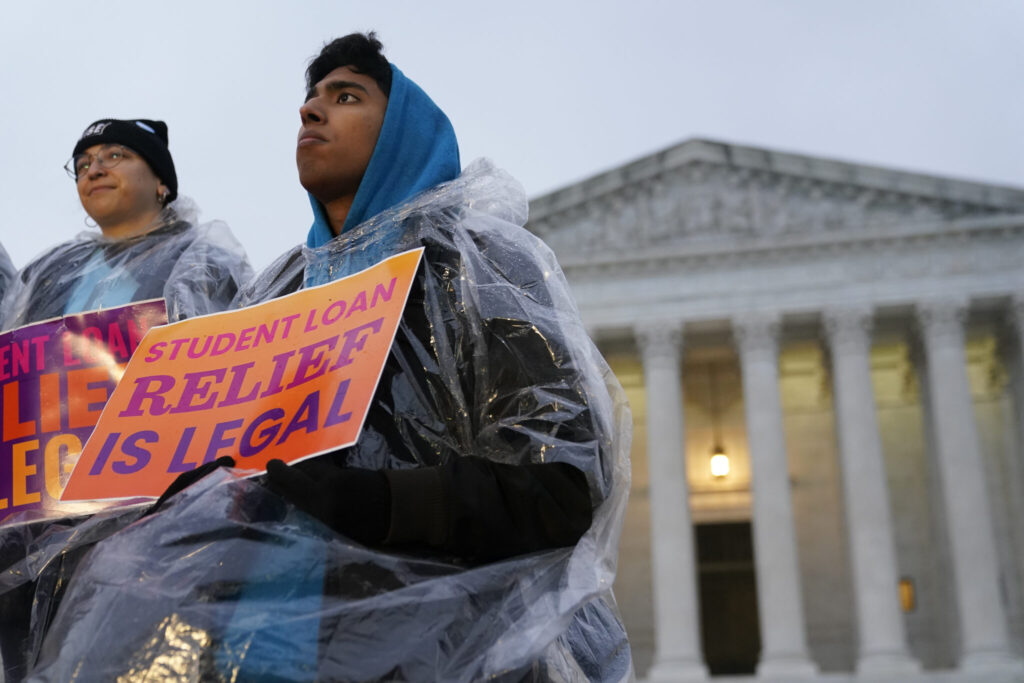
“I’m confident the legal authority to carry that plan is there,” Biden said on Monday, at an event to mark Black History Month.
The president, who once doubted his own authority to broadly cancel student debt, first announced the program in August. Legal challenges quickly followed.
Republican-led states and lawmakers in Congress, as well as conservative legal interests, are lined up against the plan as a clear violation of Biden’s executive authority. Democratic-led states and liberal interest groups are backing the Democratic administration in urging the court to allow the plan to take effect.
Without it, loan defaults would dramatically increase when the pause on loan payments ends no later than this summer, the administration says. Payments were halted in 2020 as part of the response to the coronavirus pandemic.
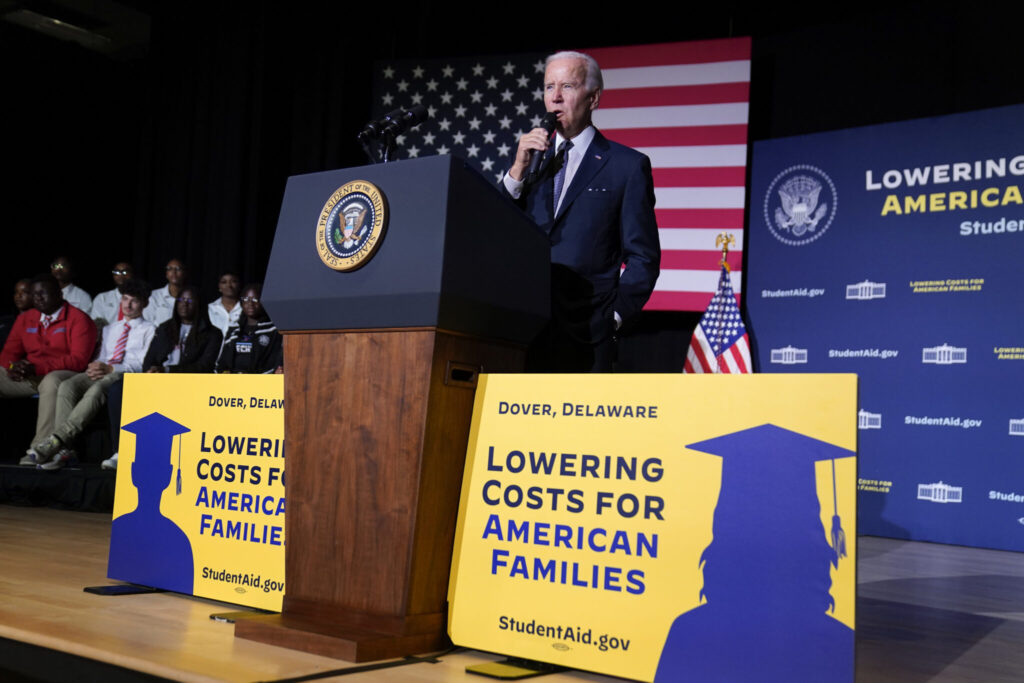
The administration says a 2003 law, commonly known as the HEROES Act, allows the secretary of education to waive or modify the terms of federal student loans in connection with a national emergency. The law was primarily intended to keep service members from being worse off financially while they fought in wars in Afghanistan and Iraq.
Nebraska and other states that sued say the plan is not necessary to keep the rate of defaults roughly where it was before the pandemic. The 20 million borrowers who have their entire loans erased would get a “windfall” that will leave them better off than they were before the pandemic, the states say.
Dozens of borrowers came from across the country to camp out near the court on a soggy Monday evening in hopes of getting a seat for the arguments. Among them was Sinyetta Hill, who said that Biden’s plan would erase all but about $500 of the $20,000 or so she has in student loans.
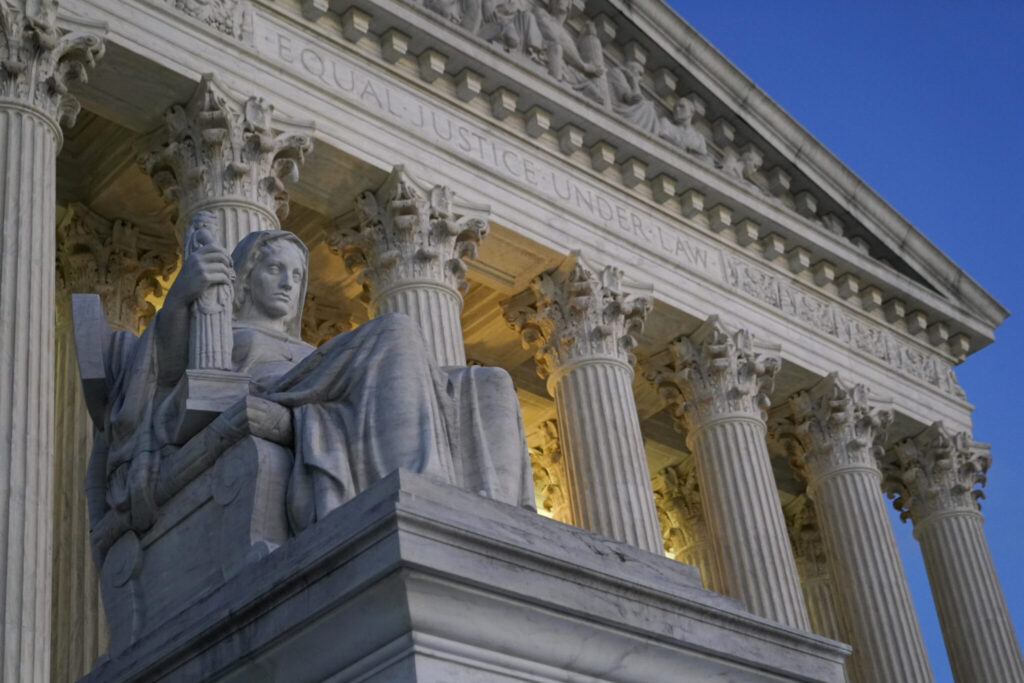
“I was 18 when I signed up for college. I didn’t know it was going to be this big of a burden. No student should have to deal with this. No person should have to deal with this,” said Hill, 22, who plans to study law after she graduates from the University of Wisconsin-Milwaukee in May.
Biden’s plan could meet a frosty reception in the courtroom. The court’s conservatives have been skeptical of other Biden initiatives related to the pandemic, including vaccine requirements and pauses on evictions. Those were billed largely as public health measures intended to slow the spread of COVID-19.
The loan forgiveness plan, by contrast, is aimed at countering the economic effects of the pandemic.
The national emergency is expected to end May 11, but the administration says the economic consequences will persist, despite historically low unemployment and other signs of economic strength.
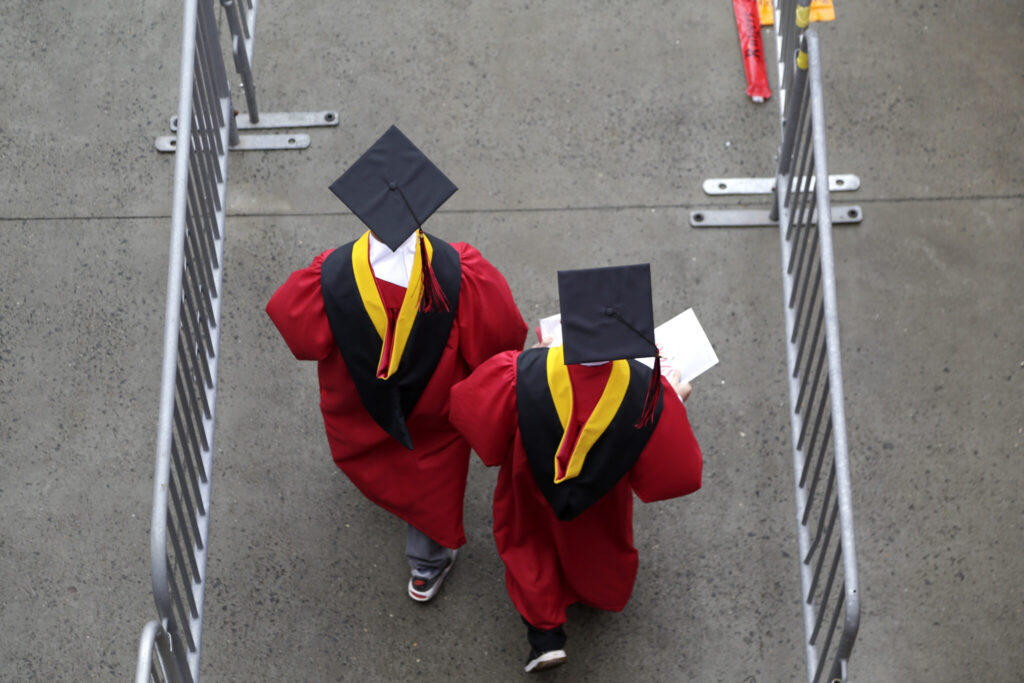
In addition to the debate over the authority to forgive student debt, the court also will confront whether the states and two individuals whose challenge also is before the justices have the legal right, or standing, to sue.
Parties generally have to show that they would suffer financial harm and benefit from a court ruling in their favor. A federal judge initially found that the states would not be harmed and dismissed their lawsuit before an appellate panel said the case could proceed.
Of the two individuals who sued in Texas, one has student loans that are commercially held and the other is eligible for $10,000 in debt relief, not the $20,000 maximum. They would get nothing if they win their case.
A decision is expected by late June.
Where things stand ahead of the hearing as well as what to expect:
HOW DOES THE FORGIVENESS PLAN WORK?
The debt forgiveness plan announced in August would cancel $10,000 in federal student loan debt for those making less than $125,000 or households with less than $250,000 in income per year. Pell Grant recipients, who typically demonstrate more financial need, would get an additional $10,000 in debt forgiven.
College students qualify if their loans were disbursed before July 1. The plan makes 43 million borrowers eligible for some debt forgiveness, with 20 million who could have their debt erased entirely, according to the Biden administration.
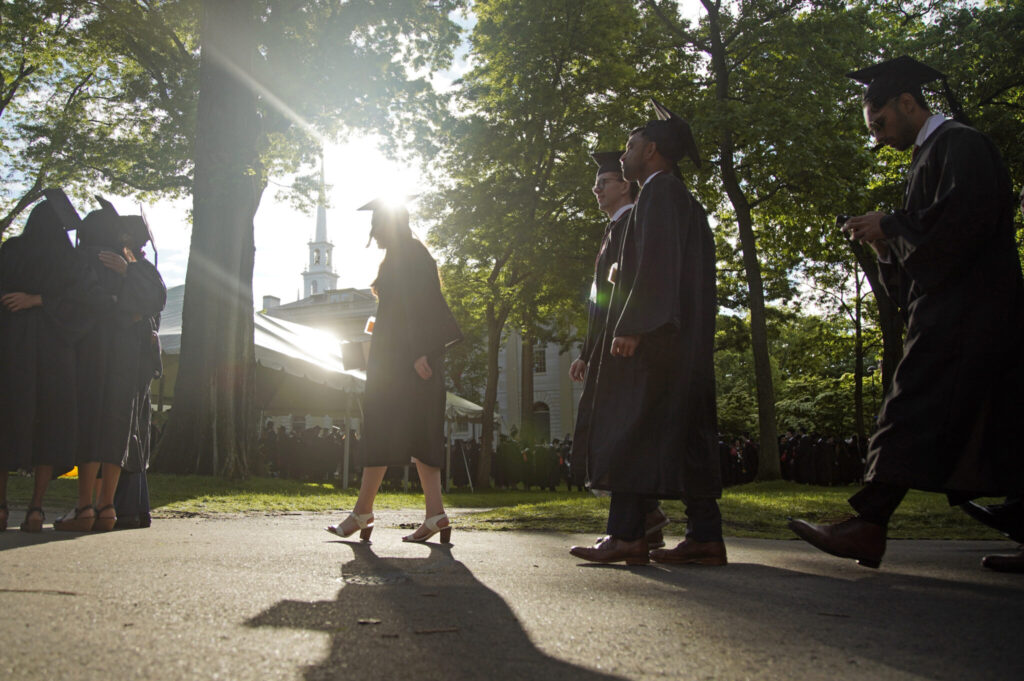
The White House says 26 million people have applied for debt relief, and 16 million people had already had their relief approved. The Congressional Budget Office has said the program will cost about $400 billion over the next three decades.
HOW DID THE ISSUE WIND UP AT THE SUPREME COURT?
The Supreme Court is hearing two challenges to the plan. One involves six Republican-led states that sued. The other involves a lawsuit filed by two students.
A lower court dismissed the lawsuit involving the following states: Arkansas, Iowa, Kansas, Missouri, Nebraska and South Carolina. The court said the states could not challenge the program because they weren’t harmed by it. But a panel of three federal appeals court judges on the U.S. Court of Appeals for the 8th Circuit — all of them appointed by Republican presidents — put the program on hold during an appeal. The Supreme Court then agreed to weigh in.
The students’ case involves Myra Brown, who is ineligible for debt relief because her loans are commercially held, and Alexander Taylor, who is eligible for just $10,000 and not the full $20,000 because he didn’t receive a Pell grant. They say that the Biden administration didn’t go through the proper process in enacting the plan, among other things.
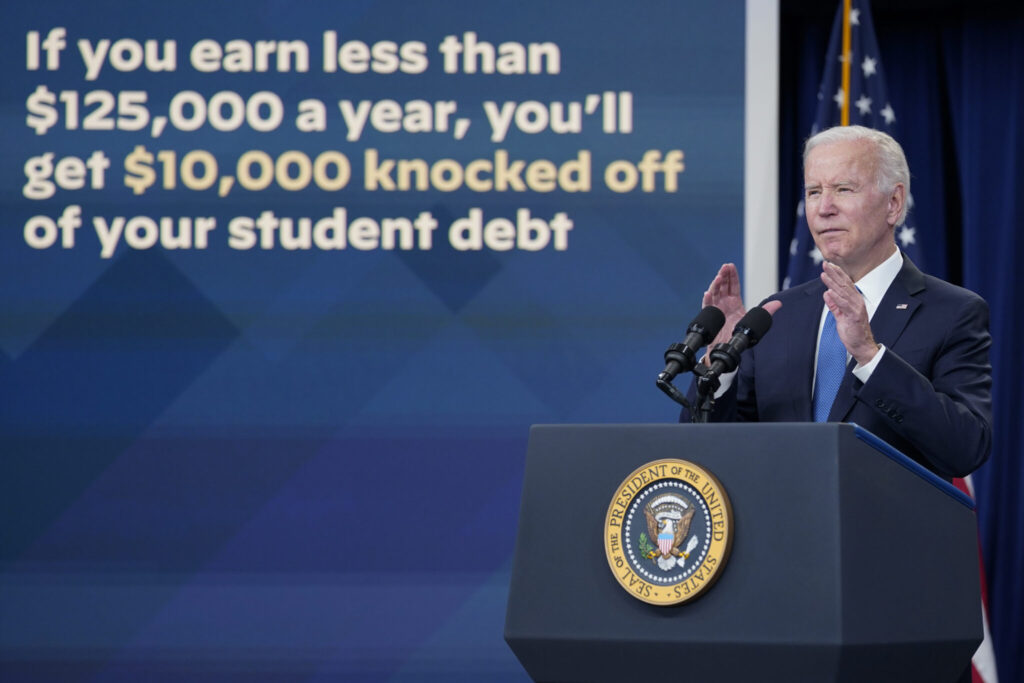
Texas-based U.S. District Judge Mark Pittman, an appointee of President Donald Trump, sided with the students and ruled to block the program. Pittman ruled that the Biden administration did not have clear authorization from Congress to implement the program. A federal appeals court left Pittman’s ruling in place, and the Supreme Court agreed to take up the case along with the states’ challenge.
HOW DID BIDEN GET TO CANCEL THE DEBT?
To cancel student loan debt, the Biden administration relied on the Higher Education Relief Opportunities for Students Act, commonly known as the HEROES Act. Originally enacted after the Sept. 11, 2001, terror attack, the law was initially intended to keep service members from being worse off financially while they fought in wars in Afghanistan and Iraq. Now extended, it allows the secretary of education to waive or modify the terms of federal student loans as necessary in connection with a national emergency.
Trump, a Republican, declared the COVID-19 pandemic a national emergency in March 2020, but Biden recently announced that designation will end May 11. The Biden administration has said that the end to the national emergency doesn’t change the legal argument for student loan debt cancellation because the pandemic affected millions of student borrowers who might have fallen behind on their loans during the emergency.
WHAT ARE THE JUSTICES LIKELY TO ASK ABOUT?
Expect the justices to be focused on several big issues. The first one is whether the states and the two borrowers have the right to sue over the plan in the first place, a legal concept called “standing.” If they don’t, that clears the way for the Biden administration to go ahead with it. To prove they have standing, the states and borrowers will have to show in part that they’re financially harmed by the plan.
Beyond standing, the justices will also be asking whether the HEROES Act gives the Biden administration the power to enact the plan and how it went about doing so.
WHEN WILL BORROWERS KNOW THE OUTCOME?
It will likely be months before borrowers learn the outcome of the case, but there’s a deadline of sorts. The court generally issues all of its decisions by the end of June before going on a summer break.
Whether or not the debt gets cancelled, the case’s resolution will bring changes. While federal student loan payments are currently paused, that will end 60 days after the case is resolved. And if the case hasn’t been resolved by June 30, payments will start 60 days after that.

